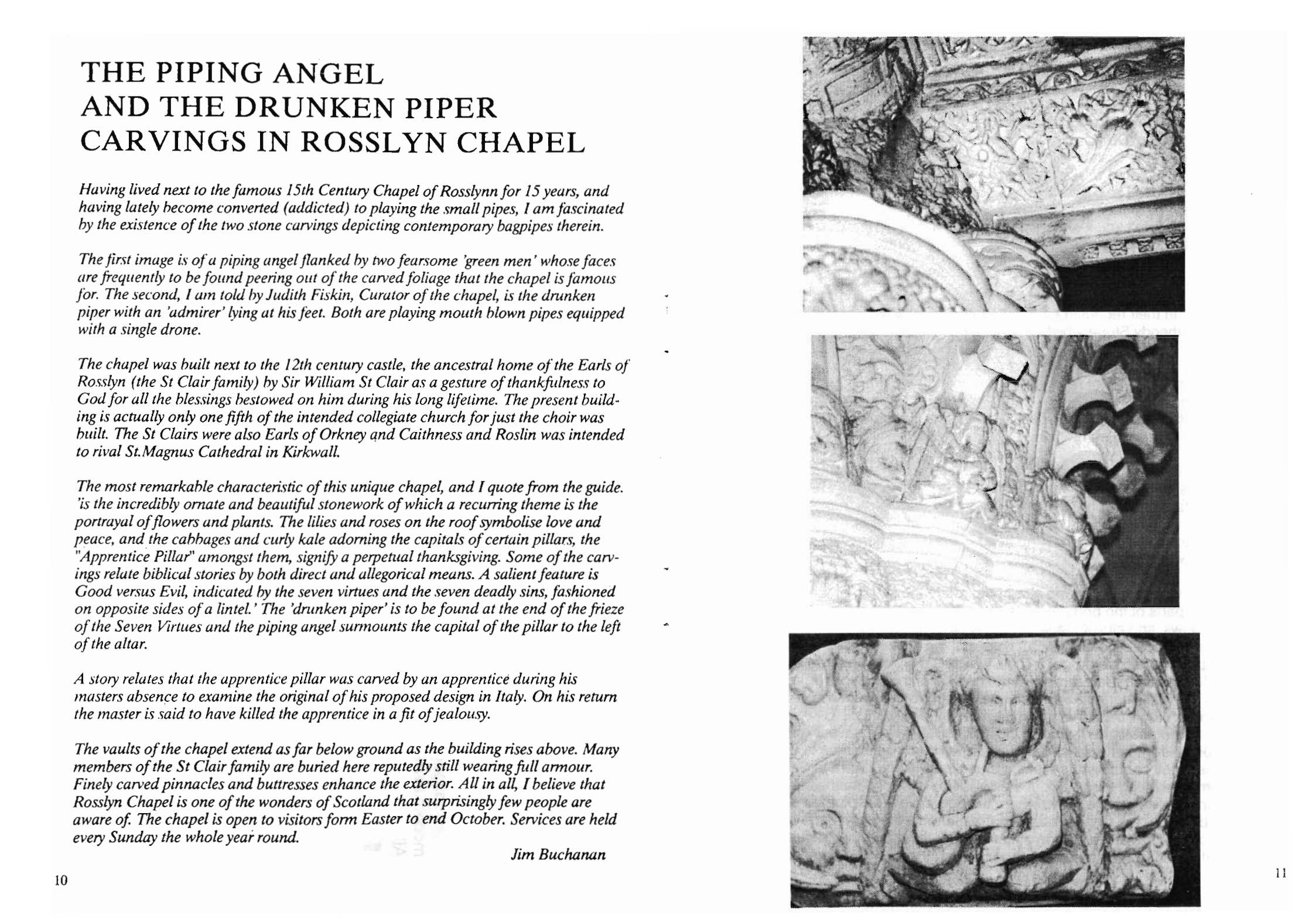The Piping Angle and the Drunken Piper carvings in Rosslyn

THE PIPING ANGEL
AND THE DRUNKEN PIPER:
CARVINGS IN ROSSLYN CHAPEL
Having lived next to the famous 15th Century Chapel of Rosslyn for 15 years, and having lately become converted (addicted) to playing the small pipes, I am fascinated by the existence of the two stone carvings depicting con- temporary bagpipes therein.
The first image is of a piping angel flanked by two fearsome ‘green men’ whose faces are frequently to be found peering out of the carved foliage that the chapel is famous for. The second, I am told by Judith Fiskin, Curator of the chapel, is the drunken piper with an ‘admirer’ lying at his feet. Both are playing mouth blown pipes equipped with a single drone.
The chapel was built next to the 12th century castle, the ancestral home of the Earls of Rosslyn (the St Clair family) by Sir William St Clair as a gesture of thankfulness to God for all the blessings bestowed on him during his long lifetime. The present building is actually only one fifth of the intended collegiate church for just the choir was built. The St Clairs were also Earls of Orkney and Caithness and Roslin was intended to rival St.Magnus Cathedral in Kirkwall.
The most remarkable characteristic of this unique chapel, and I quote from the guide, ‘is the incredibly ornate and beautiful stonework of which a recurring theme is the portrayal of flowers and plants. The lilies and roses on the roof symbolise love and peace, and the cabbages and curly kale adorning the capitals of certain pillars, the “Apprentice Pillar” amongst them, signify a perpetual thanksgiving. Some of the carvings relate biblical stories by both direct and allegorical means. A salient feature is Good versus Evil, indicated by the seven virtues und the seven deadly sins, fashioned on opposite sides of a lintel.’ The ‘drunken piper’ is to be found at the end of the frieze of the Seven Virtues and the piping angel surmounts the capital of the pillar to the left of the altar.
A story relates that the apprentice pillar was carved by an apprentice during his masters absence to examine the original of his proposed design in Italy. On his return the master is said to have killed the apprentice in a fit of jealousy. The vaults of the chapel extend as far below ground as the building rises above. Many members of the St Clair family are buried here reputedly still wearing full armour. Finely carved pinnacles and buttresses enhance the exterior. All in all, I believe that Rosslyn Chapel is one of the wonders of Scotland that surprisingly few people are aware of. The chapel is open to visitors from Easter to end October. Services are held every Sunday the whole year round.
